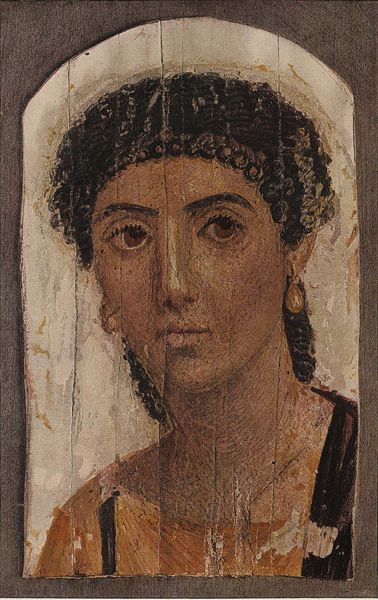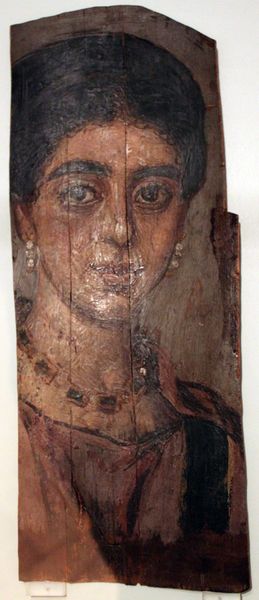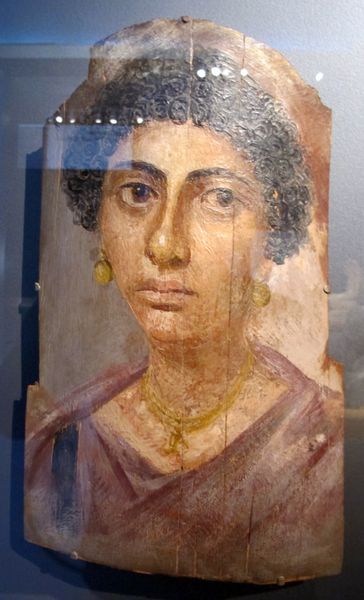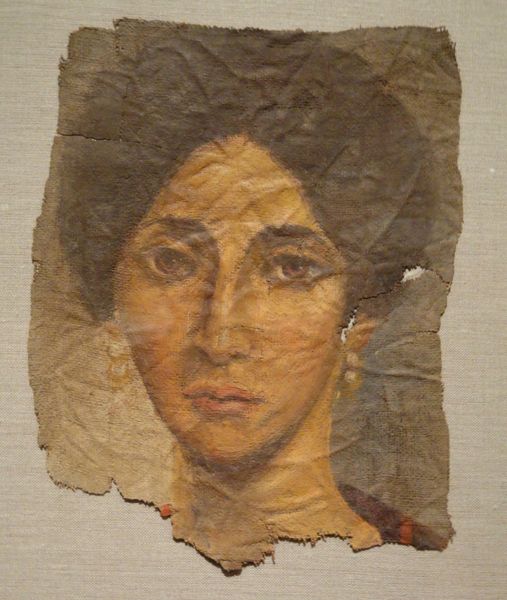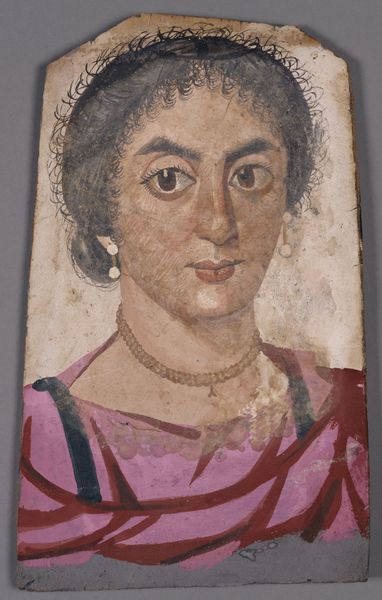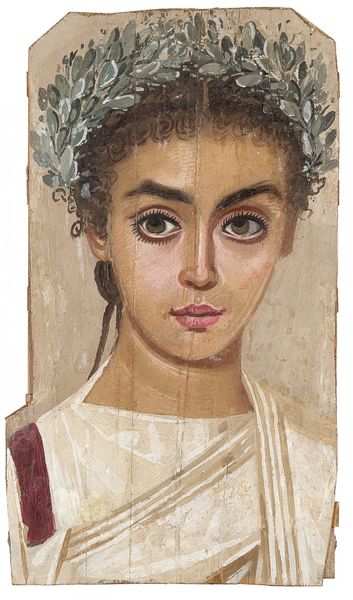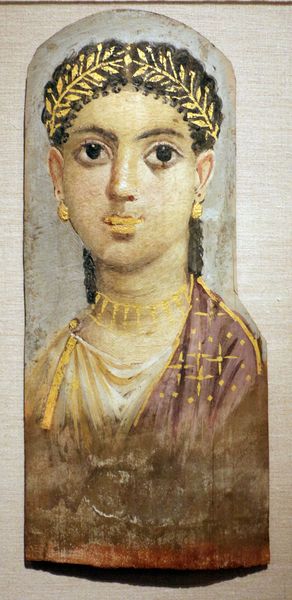
tempera, painting
#
portrait
#
head
#
face
#
tempera
#
painting
#
ancient-egyptian-art
#
oil painting
#
geometric
#
ancient-mediterranean
Copyright: Public domain
This encaustic on wood portrait of a young man, now in Berlin's Alte Nationalgalerie, was created in Roman Egypt. The subject’s gaze holds us, inviting contemplation on the nature of identity and memory. The Romans adopted the practice of affixing portraits to mummies, blending Egyptian funerary rites with Roman artistic conventions. The purple stola draped over his shoulders signifies status. This use of purple echoes the togas of Roman emperors, linking the individual to power and authority. Consider how the act of portraiture has evolved. From ancient busts to Renaissance paintings, the desire to immortalize oneself is a constant. These portraits, though, are not merely documentation, they are symbols of eternal presence. The eyes—windows to the soul—demand remembrance, compelling us to ensure he is not forgotten. This young man’s image, preserved through time, transcends its origins. It mirrors our shared human longing for recognition beyond mortality, perpetually resurrected by the gazes of those who pause to remember him.
Comments
No comments
Be the first to comment and join the conversation on the ultimate creative platform.
